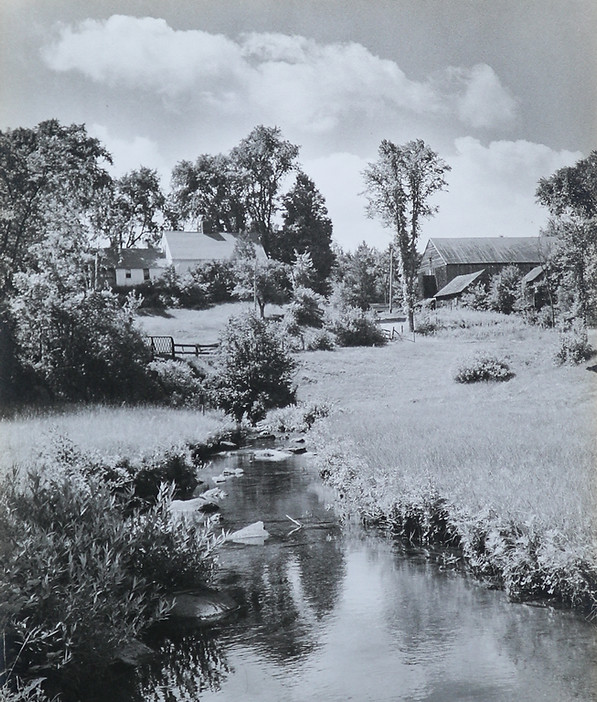
The Burroughs-Hebb-McClintock Farm
BURROUGHS, William; Of Marblehead, Mass., came to Newbury, Vermont before 1790. Husband to Elizabeth, née Peach; father of Betsey, Anna, William, Mary, George, Martha, and Samuel. About 1810 he removed to a farm on Peach Brook and built house, barns, and sawmill.
GARRET; noun, gar·ret \ˈger-ət \ An unfinished part of a house just beneath the roof.
The Burroughs Garret, handwoven textiles rooted in Northern Vermont.
In October of 2015 I first set foot on the farm built by William Burroughs circa 1810, lived on by generations of just two families, and being offered for sale for the first time in a century. The farm sits up in the hills of Newbury, Vermont, a town on the banks of the Connecticut River, one hundred miles north of the Massachusetts border. It was the kind of relic one used to find frequently in the North Country, but like the elm and mountain lion these places have become rarities in recent times, endangered species in their natural habitat. Like the wildlife, this house survived because somebody cared, despite sitting vacant since 1989.
Two hundred years of stuff was gathered here, thanks to Yankee thrift and benign neglect. The garret, that part of the house tucked under the roof, not surprisingly held the greatest treasures. The space is large and open to the roof frame, pierced through the middle by a chimney stack of soft old brick. It's the place of childhood imagination, dark old wood, 1850s newspapers glued to the walls. On the east side a bedroom was fitted out, perhaps for the builder's eldest daughter. In the summer of 1824, two years married and four months pregnant, Betsey Ruggles was widowed when her husband drowned while rafting logs. She returned to her father's house in Newbury with her children and lived here for the remainder of her life.

Tucked above her bedroom ceiling, stowed and forgotten long ago, was harness, reeds, skarne, warping bars, raddle, and a loom. Behind a knee-wall were wooden spools and broken parts of a flax wheel, all dating to the 19th century. Linen and wool were spun and woven here by the Burroughs girls, likely by Betsey, widowed young and in need of support. Numerals on the loom match ones in the window frames of the house itself, perhaps left there by her father—a farmer, sawyer, and carpenter, the sort of man who could build house frames as well as he could looms. I bought the house.
I have always been inspired by New England's past, by a rough-hewn beauty and reserved aesthetic, by a love of tradition and a sense of place. I have spent time working in some of the region's best museums, and now dedicate my time to preserving this special corner of my brave little state. I was exposed to cloth making at a tender age by my grandmother who spun, dyed, wove, and knit, and from her learned to spin by twelve. I was weaving by sixteen. An apprenticeship under Kate Smith, of Eaton Hill Textiles, and Norman Kennedy, founder of the Marshfield School of Weaving, placed my technique squarely in the British-American weaving tradition. Employing my hands producing textiles imbues my work with memories of the people who guided them, and the people who did the same work in this very space two centuries ago. Through corporeal objects we connect with people and place in bonds that are subtle, but deep. These are not imagined connections. Flax, wool, cotton, silk are all composed of nothing except the soil, plants, and bodies that made them. Each vagary of the season leaves its unique mark, forever tying the fiber to the time and place that made it. This matter matters, it's as distinct and diverse as a fingerprint. It's textile terroir.
I am pleased to offer handspun yarn, natural dyeing, and handwoven textiles made using real equipment from the 18th and 19th centuries, on a farm where cloth has been made since 1810. To commission work or learn more about my process, please contact me by phone, email, or an old-fashioned letter. I would love to share my passion for the highest quality handmade fabrics and make you a part of the story of this special place I call home.
The Burroughs-Hebb-McClintock Farm, ca. 1950. Photographer unknown.

